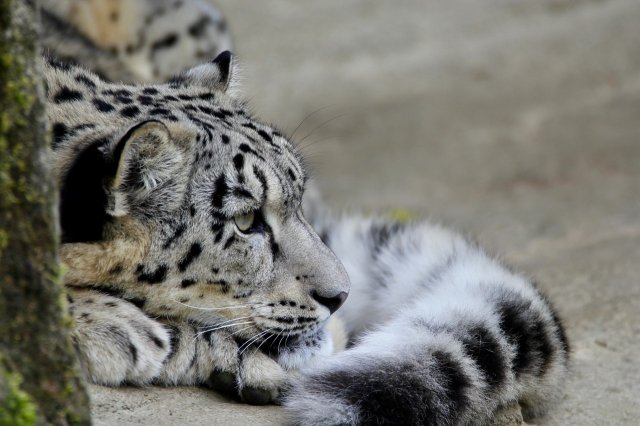The Enigmatic Elegance of Snow Leopards’ Tails
The Enigmatic Elegance of Snow Leopards’ Tails: A Captivating Tale of Grace and Mystery
Snow leopards, also known as the “ghosts of the mountains,” are one of the most elusive and captivating creatures on Earth. Their majestic appearance and enigmatic behavior have fascinated researchers and wildlife enthusiasts for centuries. While every aspect of these magnificent big cats is intriguing, their tails hold a special allure. In this article, we will explore the enigmatic elegance of snow leopards’ tails and uncover the secrets behind their unique features.
The Functionality of Snow Leopards’ Tails
The snow leopard’s tail serves multiple purposes, making it an essential tool for their survival in their harsh mountainous habitat. Here are some of the key functions of their tails:
- Balancing: Snow leopards are known for their incredible agility and ability to navigate treacherous terrains. Their long and thick tails play a crucial role in maintaining balance while traversing steep slopes and rocky cliffs.
- Warmth: Living in the high altitudes of the Himalayas and Central Asia, snow leopards endure freezing temperatures. Their tails, which are almost as long as their bodies, act as a natural blanket, providing insulation and keeping them warm in the extreme cold.
- Communication: Snow leopards are solitary animals, and their tails play a vital role in communication. They use their tails to signal their presence, intentions, and emotions to other snow leopards in their territory.
The Unique Anatomy of Snow Leopards’ Tails
The tails of snow leopards possess several unique features that set them apart from other big cats. Let’s delve into the anatomy of their tails:
- Length and Thickness: Snow leopards’ tails can measure up to 80% of their body length, ranging from 80 to 105 centimeters. They are incredibly thick and muscular, allowing for better balance and insulation.
- Flexible Vertebrae: The tails of snow leopards consist of 23 vertebrae, which are highly flexible. This flexibility enables them to make quick and precise movements, especially during hunting or climbing.
- White Tip: One of the most distinctive features of snow leopards’ tails is the white tip. This white tip acts as a visual signal, making it easier for other snow leopards to spot each other in the vast snowy landscapes.
The Role of Tails in Hunting
While snow leopards are primarily known for their stealth and agility, their tails also play a crucial role in their hunting strategies. Here’s how their tails aid them in capturing prey:
- Camouflage: Snow leopards’ tails are covered in thick fur, which helps them blend seamlessly with their snowy surroundings. By tucking their tails around their bodies, they can remain hidden from unsuspecting prey.
- Stability: When snow leopards are stalking their prey, their tails act as a counterbalance, allowing them to make sudden and precise movements without losing their stability. This is particularly important when pouncing on their target.
The Conservation Significance
Snow leopards are listed as a vulnerable species by the International Union for Conservation of Nature (IUCN). Understanding the importance of their tails can contribute to their conservation efforts. By protecting their habitat and ensuring their survival, we can preserve the enigmatic elegance of snow leopards’ tails for future generations to admire.
Conclusion
The enigmatic elegance of snow leopards’ tails is a testament to the remarkable adaptations of these elusive creatures. From balancing on treacherous slopes to communicating with fellow snow leopards, their tails serve multiple purposes. The unique anatomy and functionality of their tails make them an integral part of their survival in the harsh mountainous regions they call home. By appreciating and protecting these magnificent big cats, we can ensure the preservation of their enigmatic elegance for years to come.
Read More About Leopards From Wikipedia




